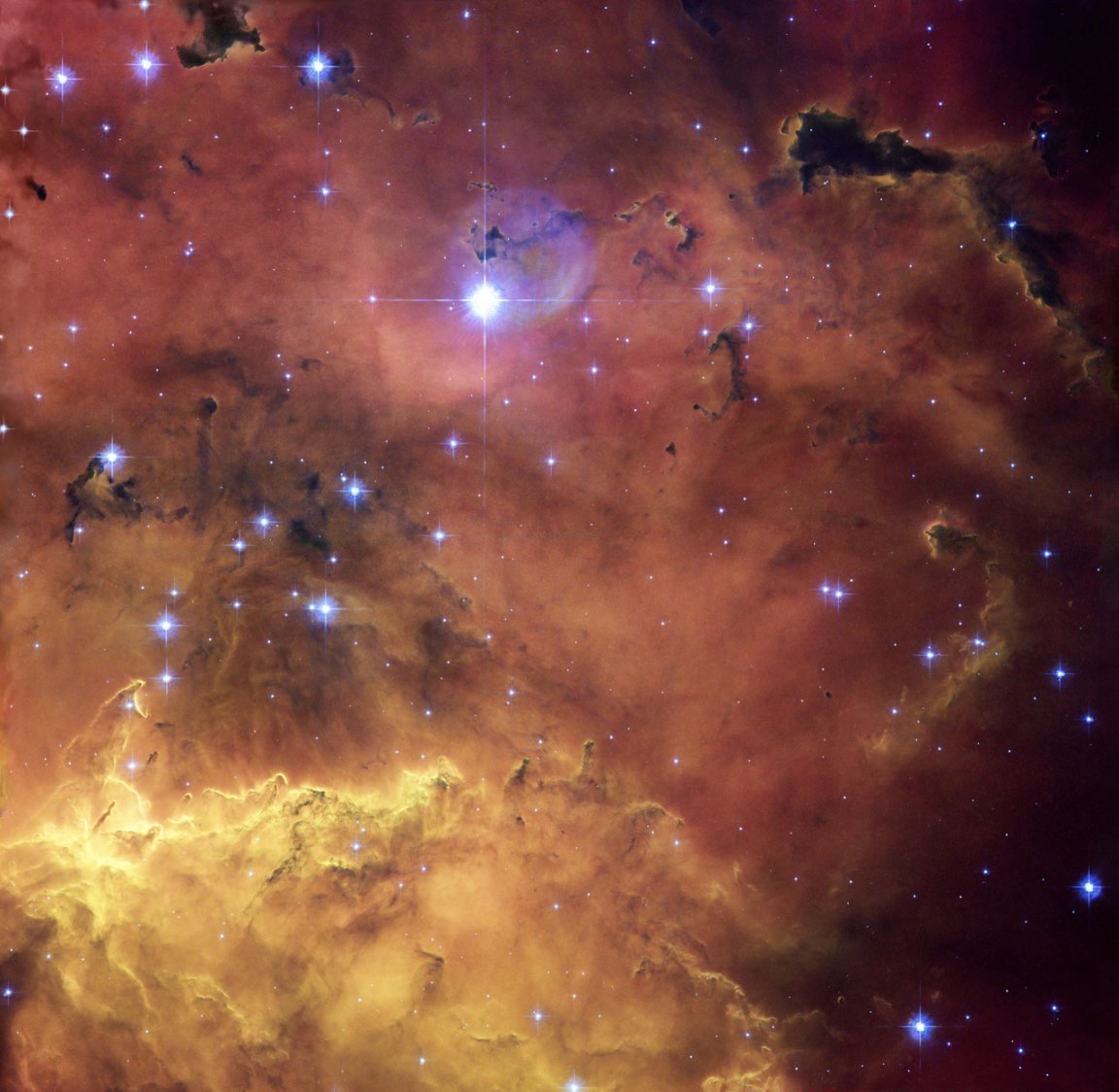

NGC 2467—otherwise known as the Skull and Crossbones Nebula—is a stellar nursery found approximately 13,000 light-years from Earth toward the constellation of Puppis.
Numerous stars and clusters come together to forge a uniquely stunning stellar arena, as seen in this image from the Hubble Space Telescope. One of the most notable clusters within NGC 2467, known as Haffner 18, houses around 50 stars—most are high-mass, but have already begun the transit into the celestial afterlife. They certainly help shape the pillars of gas and dust, but their role is negligible compared to that of HD 6315.
This gargantuan star single-handedly does most of the work. Its outbursts, ranging from flares, to coronal mass ejections and such, eject vast quantities of radiation into the nebular material, which has a carving effect. The dark splotches near the top are Bok Globules. Within these regions, dust is packed together so tightly, light from embedded stars can’t break through.
According to the ESA, “This picture was created from images taken with the Wide Field Channel of the Advanced Camera for Surveys through three different filters (F550M, F660N and F658N, shown in blue, green and red). These filters were selected to let through different colours of red and yellow light arising from different elements in the gas. The total aggregate exposure time was about 2000 seconds and the field of view is about 3.5 arcminutes across. These data were taken in 2004.” (See a larger image here)